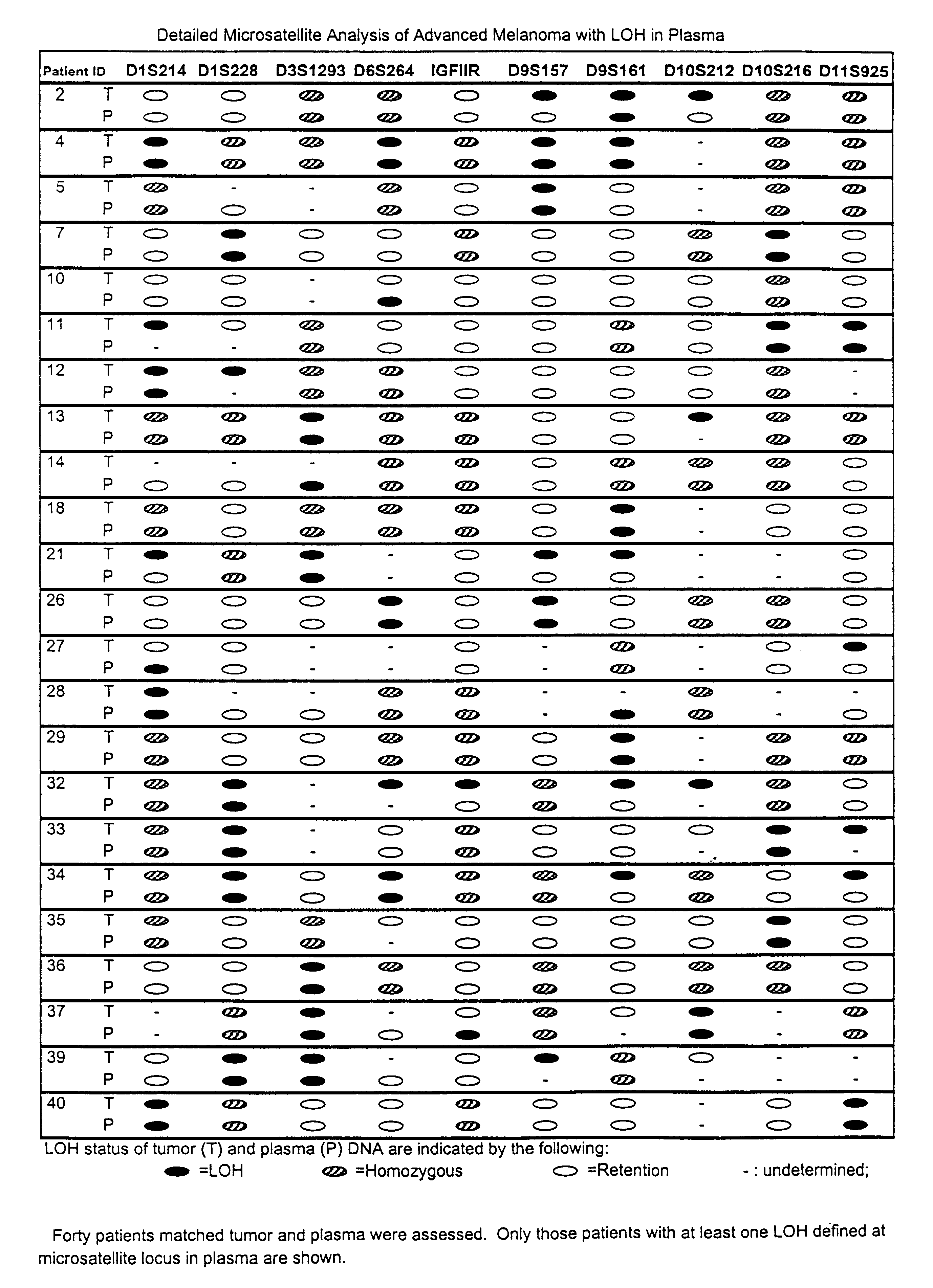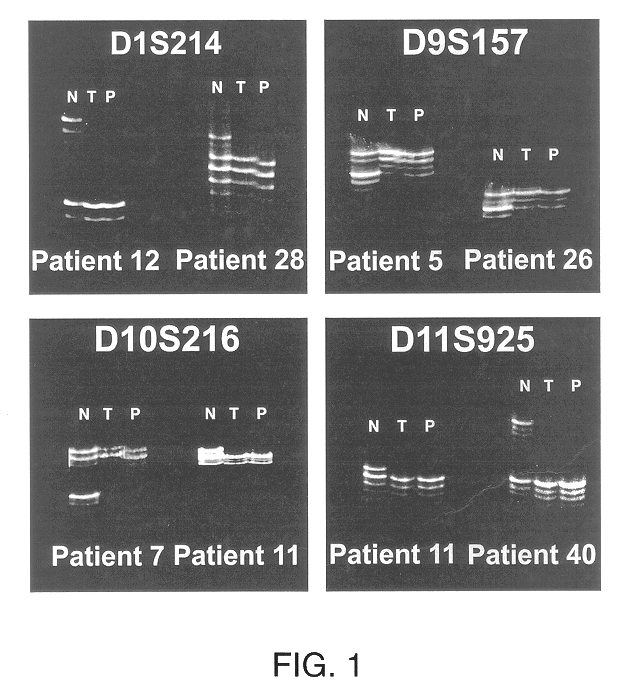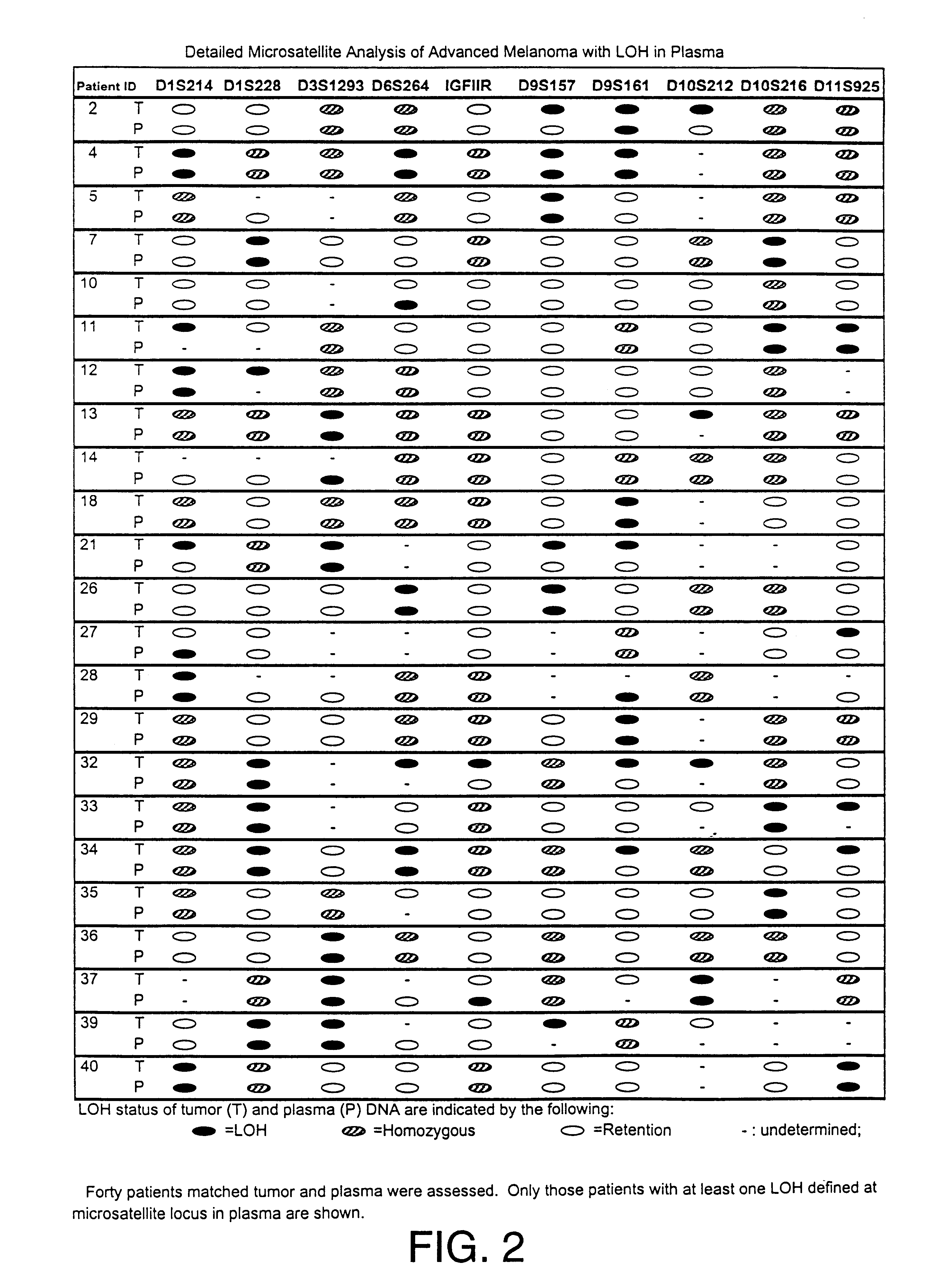Detection of loss of heterozygosity in tumor and serum of melanoma patients
a tumor and serum technology, applied in the field of molecular biology and oncology, can solve the problems of very dynamic and complex genetic changes that simultaneously occur, and achieve the effect of reducing the risk of cancer and affecting the survival rate of patients
- Summary
- Abstract
- Description
- Claims
- Application Information
AI Technical Summary
Benefits of technology
Problems solved by technology
Method used
Image
Examples
example i
Five-milliliter (ml) blood samples were collected in 0.129 M sodium citrate from a total of 76 patients, who have been followed up with a diagnosis of advance stage melanoma and 20 healthy subjects. The plasma was immediately separated from the blood cells by centrifugation at 1000.times.g, for 5 minutes, filtered through a 13 mm serum filter, and kept at -30.degree. C. until DNA extraction. White blood cells from individual patients were used as a normal DNA control. Lymphocytes were separated from red blood cells with Puregene RBC Lysis Solution (Gentra Systems, MN). Blood also was spotted onto FTA blood stain cards for normal genomic DNA extraction as well as long term storage. The cell pellet was washed with physiological phosphate buffered saline. Corresponding tumor tissues were micro-dissected from 10 mm serial sections of formalin fixed paraffin embedded blocks. All tissue sections were diagnosed to include malignant melanoma cells by histopathology (Kuroki,...
PUM
| Property | Measurement | Unit |
|---|---|---|
| volume | aaaaa | aaaaa |
| genetic heterogeneity | aaaaa | aaaaa |
| concentrations | aaaaa | aaaaa |
Abstract
Description
Claims
Application Information
 Login to View More
Login to View More - R&D
- Intellectual Property
- Life Sciences
- Materials
- Tech Scout
- Unparalleled Data Quality
- Higher Quality Content
- 60% Fewer Hallucinations
Browse by: Latest US Patents, China's latest patents, Technical Efficacy Thesaurus, Application Domain, Technology Topic, Popular Technical Reports.
© 2025 PatSnap. All rights reserved.Legal|Privacy policy|Modern Slavery Act Transparency Statement|Sitemap|About US| Contact US: help@patsnap.com



